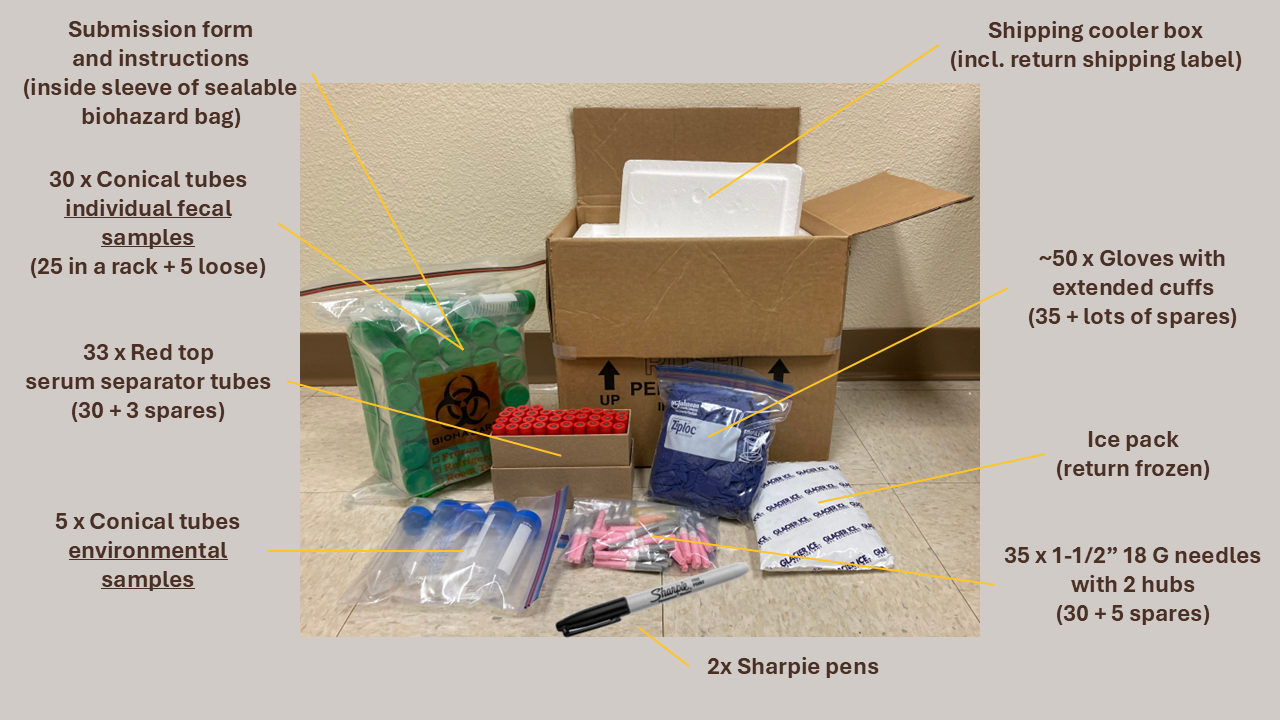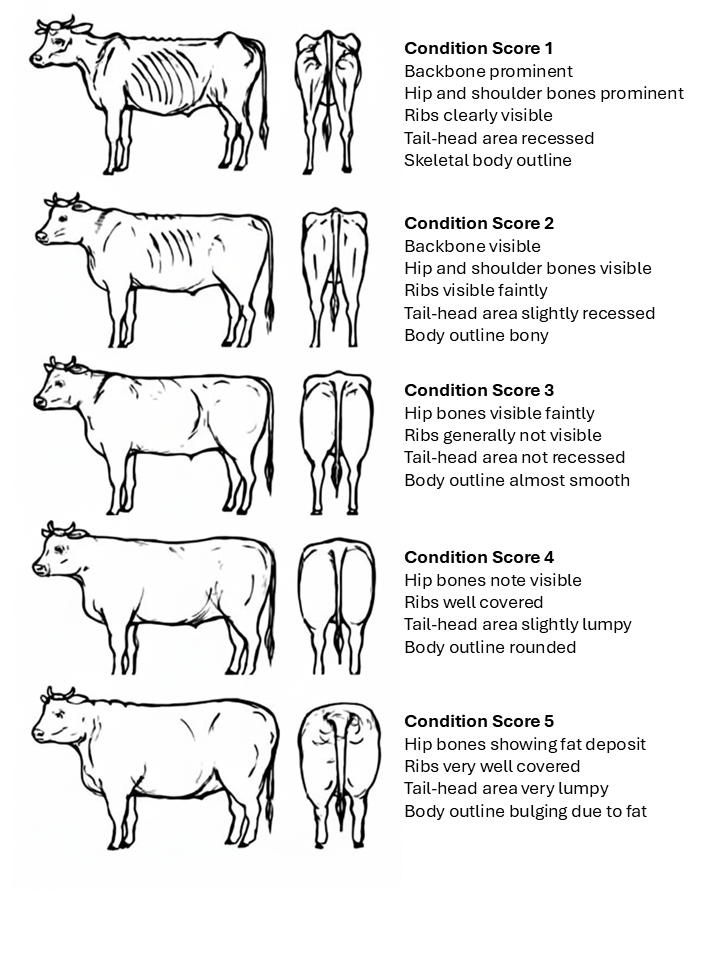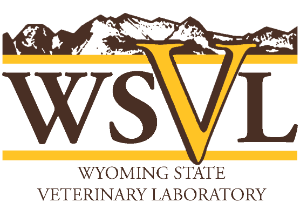Benefits of Participation
Veterinarians and producers who participate in this project will receive:
- Free diagnostic testing: ELISA for screening, with confirmatory PCR and culture as appropriate.
- Convenient sample collection kits: pre-assembled kits with all necessary supplies for blood and fecal collection.
- Herd-specific results: confidential feedback on your herd’s Johne’s disease status.
- Statewide results: summary findings for Wyoming beef cattle, including spatial and ecological trends.
- Support and education: resources on Johne’s disease prevention and management.
Sampling & Testing
- Sample size per herd: 30 cattle (selected to ensure precision in prevalence estimates).
- Sample types: serum and fecal samples collected during fall herd work.
- Testing methods: commercial ELISA, PCR, and culture for confirmatory diagnosis and strain typing.
- Environmental surveillance: additional fecal and soil sampling in the holding pen (near collection chute) to track MAP in the environment.
How to Get Involved
We are currently enrolling herds for fall sampling. Participation requires coordination with your herd veterinarian.
Veterinarians: If you are interested in taking part, please contact us at wsvl-johnes@uwyo.edu. After initial contact, we will follow up with herd-related questions to assist with study enrollment. We need to ensure adequate coverage of herds across the entire state, therefore, we cannot guarantee you a set number of herds to include – once we gathered sufficient pre-study data, we will follow through with the final selection for this study.
Sample Collection Kits
Participating veterinarians will receive a ready-to-use cooler kit – see labeled components below:

Veterinarian Responsibilities
To ensure study success, participating veterinarians will play a key role in both herd enrollment and sample collection.
Herd Information for Selection
When expressing interest, veterinarians will be asked to provide:
- Location of each beef herd under their care
- Herd size for each registered herd
This information will help us with the random selection process to fairly recruit 100 herds across Wyoming.
Sample Collection from Enrolled Herds
Once a herd is selected, veterinarians will collect:
- 30 samples per herd, consisting of:
- Blood (serum) samples
- Fecal samples (new glove for each animal)
Sampling should be conducted either by:
- The first 30 cattle through the chute, or
- A systematic sampling strategy (e.g., every 2nd or 4th animal until 30 are reached).
Animal-Level Data Recording
For every sampled animal, veterinarians will need to record the following on the provided submission form:
- Animal ID
- Age
- Sex
- Stool consistency when collecting feces (1-5 scale: watery, soft, normal, firm, brick hard)
- Body condition score (1–5 scale: emaciated, thin, average, heavy, fat) An illustrated guide will be included in each kit.


Body Condition Score: Anon. (1994). Cattle body condition scoring [Online], Available
at: http://www.dpi.qld.gov.au/documents/Biosecurity_GeneralAnimalHealthPestsAndDiseases/Animal-HD-Investigation-Condition-scores.pdf
(Accessed: 10th August 2011)
Fecal Score: https://www.agproud.com/articles/59036-everything-you-never-wanted-to-know-about-cow-manure

